Stove Build-Up Removal
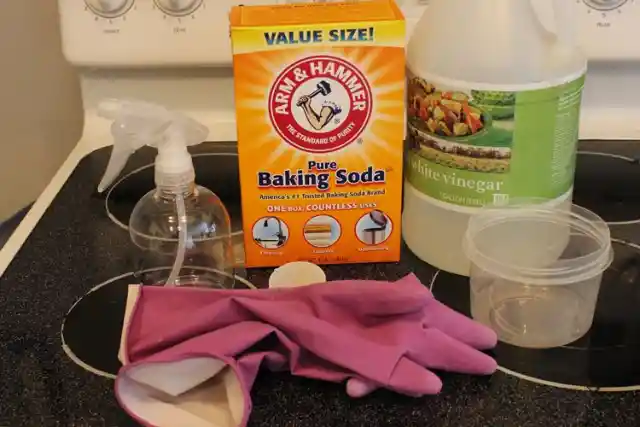
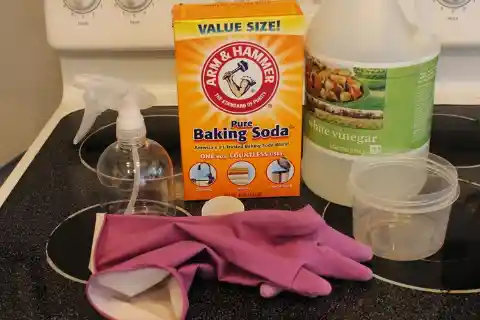
When it comes to household cleaning, many of us prefer not to invest extensive hours meticulously scrubbing every nook and cranny or breaking the bank on expensive cleaning products.
Fortunately, we now have alternatives that eliminate the need for such arduous tasks and extravagant spending. We can achieve impressive results without the traditional, time-consuming methods or costly commercial cleaners, as they’re now readily available within our own homes.
Vinegar-Soaked Faucet
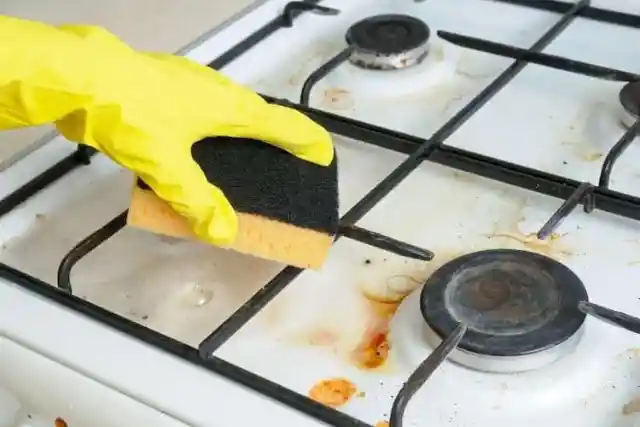
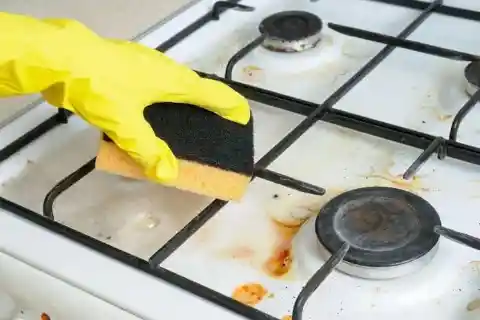
Stovetops are notorious for harboring stubborn, burnt-on food residues that become increasingly challenging to tackle over time. Fortunately, if you happen to have hydrogen peroxide and baking soda readily available in your home, you can bid farewell to this issue.
Mix these two ingredients with some water until you have a thick paste. Apply this generously on your stovetop, working hard to remove built-up grease, grime, and food spills. Wait for a few minutes for it to work effectively and then use a clean cloth or sponge to wipe away the residue. This will leave your stovetop looking clean and shiny.
Baking Soda For Stubborn Stains
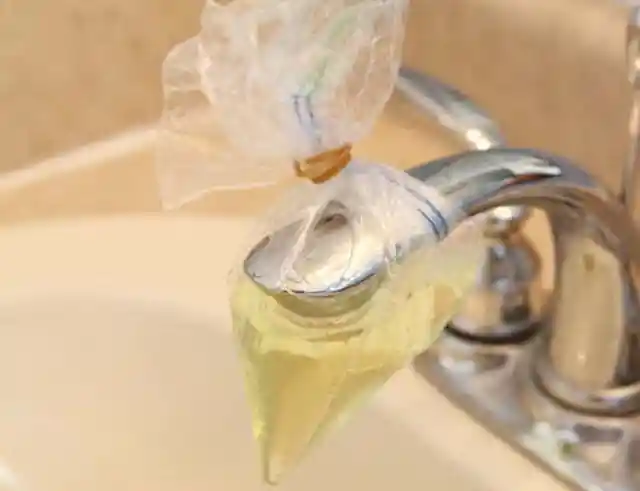
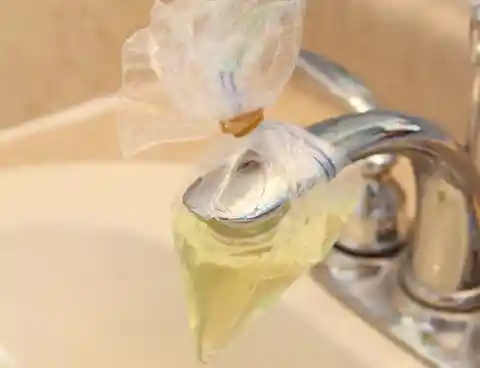
Soap, while effective at cleansing, can gradually accumulate on our faucets, resulting in an unsightly build-up over time. Even the minerals in hard water can contribute to this unsightly residue if we neglect regular cleaning.
To clean your faucets, you can use vinegar and paper towels. Soak the paper towels in vinegar, wrap them around the faucets, and leave them there for 30 to 60 minutes. Or, you can fill a Ziplock bag with vinegar, attach it to the faucet with a rubber band, and leave it there for the same amount of time.
Hydrogen Peroxide Against Carpet Stains
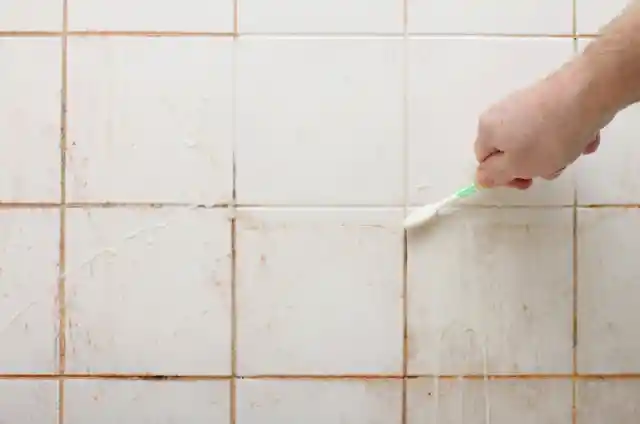
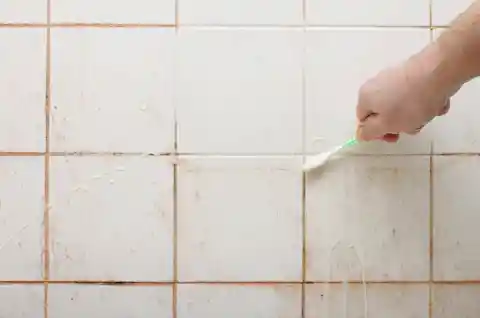
While tiles can add an aesthetically pleasing touch, they can also become quite troublesome when the spaces between them become discolored or mold begins to accumulate over time. Unfortunately, simply spraying them with water doesn’t cut it.
Fortunately, there’s a solution to our tile woes: baking soda and a toothbrush. To tackle discoloration or mold, start by generously sprinkling baking soda over the affected areas and allowing it to sit for a few moments. Then, armed with a toothbrush, begin scrubbing diligently until the entire area is spotlessly clean.
Coarse Salt And Lemon On Wooden Chopping Board
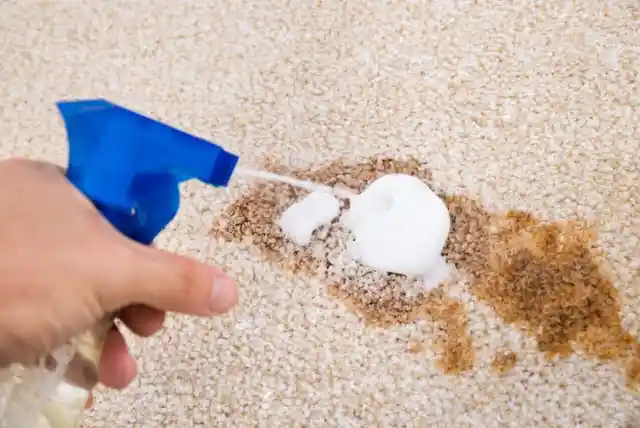
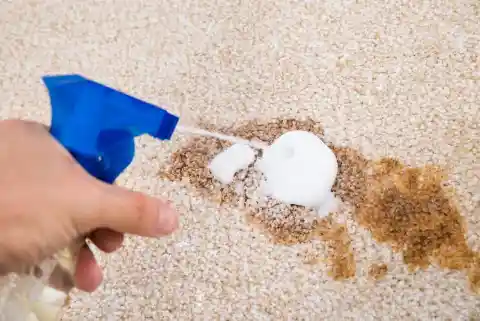
A bothersome carpet stain has the potential to disrupt our day completely, especially when the stain sits prominently in the middle of the room. However, there’s no need to stress about finding a quick fix or budgeting for carpet replacement any longer. The solution might be simpler than you think, as a combination of soap and hydrogen peroxide could effectively eliminate the stain.
To remove carpet stains, mix these two ingredients together and add water in a spray bottle. Cover the entire stained area with the solution. If the stain is tough, use a soft-bristled toothbrush to gently scrub the mixture into the carpet, starting at the edges and moving towards the center. Finally, carefully remove any excess moisture by blotting the area with paper towels.
Sprinkling Baking Soda For Steel Sinks
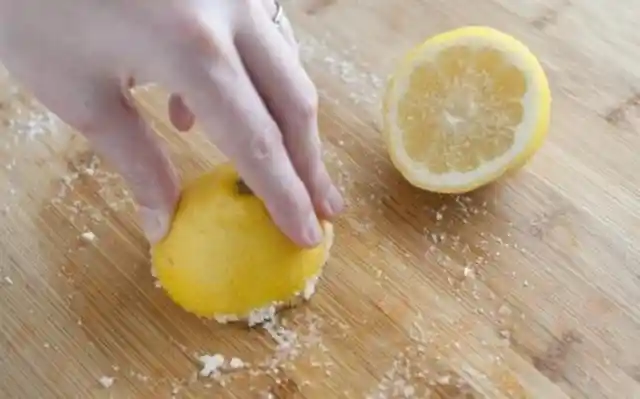
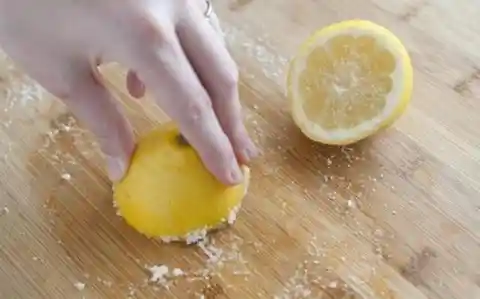
However, it’s crucial to maintain the cleanliness of wooden chopping boards to ensure the safety of your family by preventing the spread of harmful germs. Don’t worry – keeping them hygienic can be a simple task with just a bit of salt and a lemon.
Generously sprinkle coarse salt over the chopping board and then take a lemon, cut it in half, and use it to rub the entire surface of the board. Not only will this method effectively cleanse your chopping board, but it will also leave it with a delightful, fresh aroma.
Boiling Off Burned Food On Pots
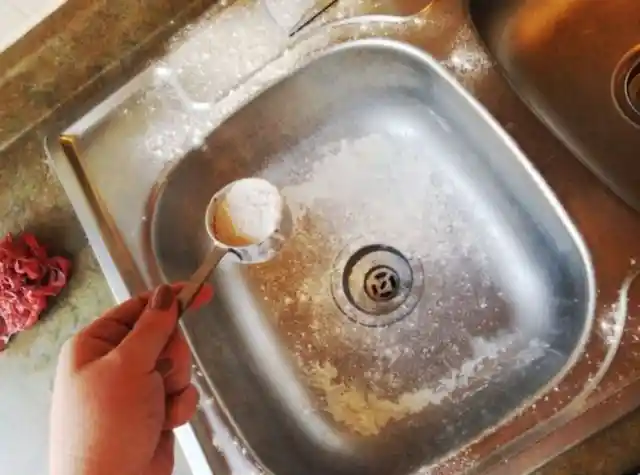
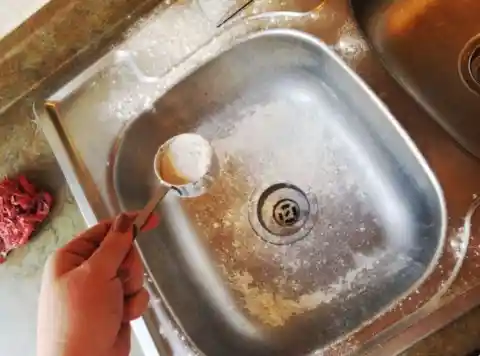
If you have a steel sink in your home, you may have encountered occasional brown spots that can be quite unsightly. Many people think they need potent cleansers or harsh chemicals to restore their sink’s original shine, but there might be a surprising solution right in your pantry – flour. Yes, you read that right.
Begin by cleaning your sink as you typically would, then take a cup or so of flour and generously sprinkle it over the entire sink’s surface. Allow it to sit for a few minutes to work its magic before gently wiping it away with a towel or soft cloth. This straightforward technique should effectively eliminate those stubborn stains, leaving your stainless steel sink gleaming with a polished finish.
Getting Rid Of Rust Rings
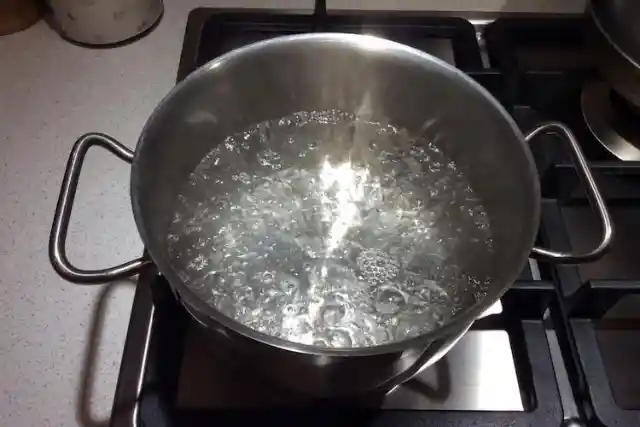
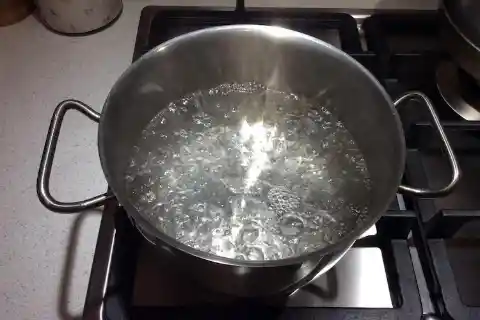
It’s not uncommon for some food to stick and burn onto a pan during the cooking process. Many of us resort to leaving the pan to soak overnight or vigorously scrubbing it with a metal brush, but the latter approach can strip away the non-stick coating of the pan.
Fortunately, there exists a simpler and more effective method for achieving a spotless pan. First, pour vinegar into the pan until it covers the burnt food. Bring it to a boil for a few minutes. This will break down most, if not all, of the burnt residue. If there are still some stubborn remnants on the pan, gently rub baking soda over the cooled pan. Then, wash the pan as usual. Now your pan is clean and ready for your next cooking adventure!
Achieving A Streak-Free Mirror
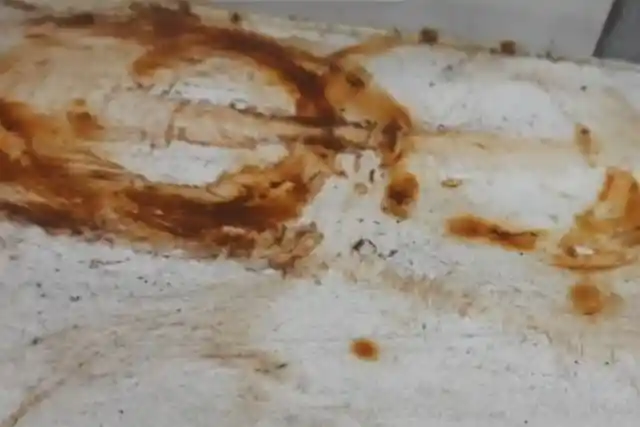
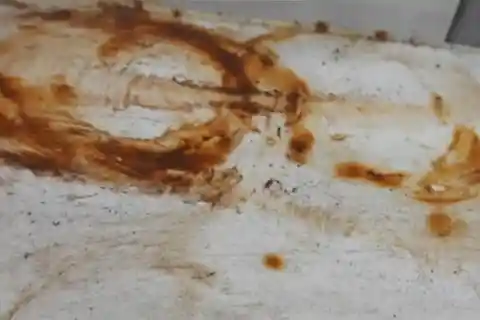
Many individuals often overlook the issue of rust rings, and unfortunately, they tend to recognize the problem only when it has already caused significant damage. For instance, metal cans in the bathroom can be the source of considerable harm if these rust rings go unnoticed – but things have changed for the better.
Getting rid of rust stains has always been difficult, but there is an easy way to remove them completely. All you need is a combination of cream of tartar and lemon juice, and those tough stains will disappear. If your rust marks are especially stubborn, using an old toothbrush to apply the mixture to the rust before wiping the area clean can provide extra help.
Carpet Stain Remover With Iron
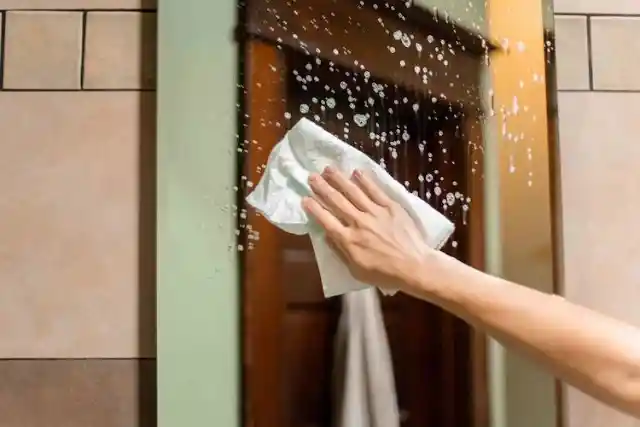
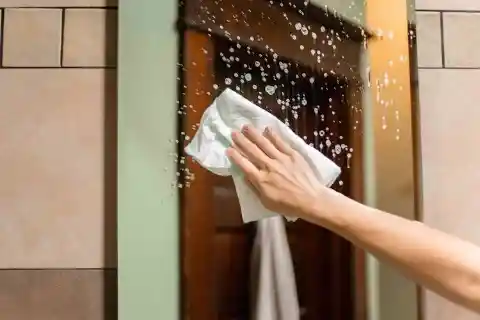
Despite our diligent efforts to scrub away the grime, achieving a spotless, gleaming mirror can often seem like an impossible task. Fortunately, a straightforward solution lies at hand: a mixture of equal parts water and vinegar in a 50/50 ratio.
Simply spray this solution onto the mirror’s surface and use a microfiber cloth or paper towel to effortlessly wipe away the smudges and dirt. Not only is this method remarkably uncomplicated, but it also saves us from the need to invest in additional cleaning products, making it a cost-effective and efficient cleaning hack.
Tough Stains Removal On Plastic Cutting Boards
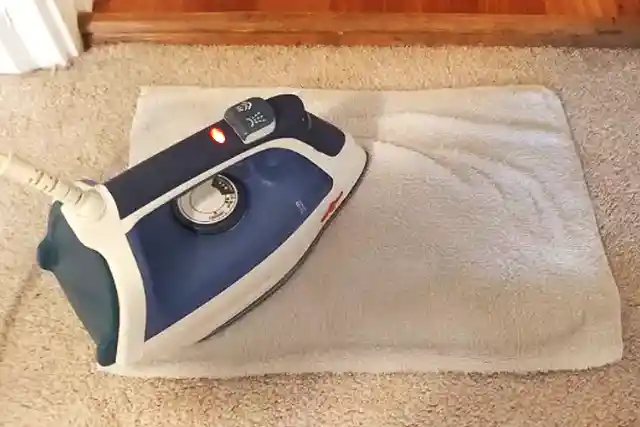
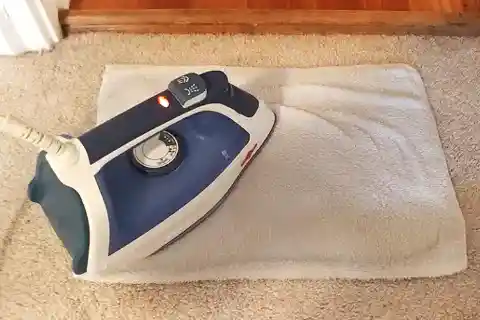
Another way in effectively removing carpet stains is using a simple household item – an iron, and the best part is, you won’t need any harsh chemicals. To begin, create a solution by mixing two parts water with one part white vinegar, and soak a towel or an old t-shirt in it. Squeeze out the excess liquid until the fabric is slightly damp, and then delicately place it over the stained area.
Next, take your iron and gently press it onto the fabric covering the stain for approximately 30 seconds. The combination of steam and the vinegar-water solution should work together to lift the stain from the carpet and refresh it, all without causing any harm. Just ensure that your iron isn’t too hot initially, as you can always increase the heat if you find the stain to be stubborn.
Dismantling Dirt And Grime On Stove Burners
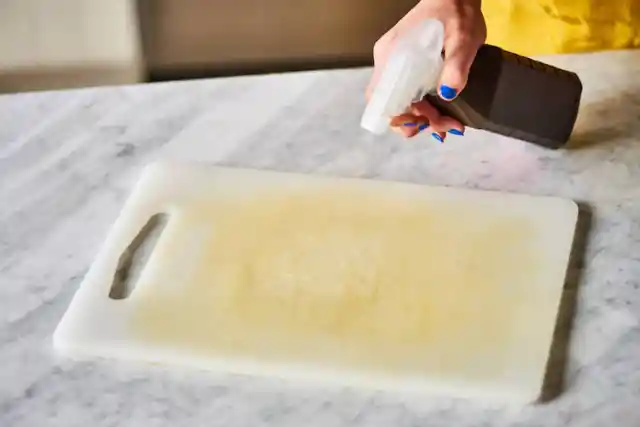
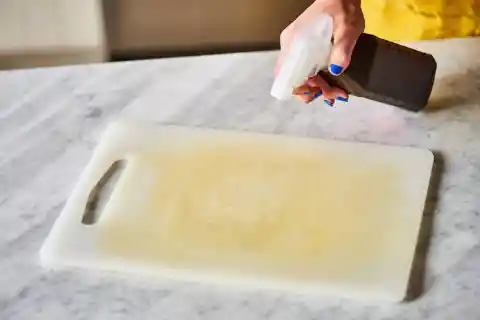
Many people choose to buy plastic cutting boards instead of wooden ones, but they can get tough stains that are hard to remove – which can be pretty frustrating. However, there is a simple trick to clean your plastic cutting board and make it look like new again.
To remove tough stains from your plastic cutting board, first mix water and bleach and spray it onto the affected areas. Do this in a well-ventilated area. Wait a few hours for the solution to soak in, then clean the board thoroughly. Once clean, let it air dry completely. Note that this method is not recommended for wooden cutting boards, as bleach can damage them.
A Smelly Cleaner For Burned-On Stains
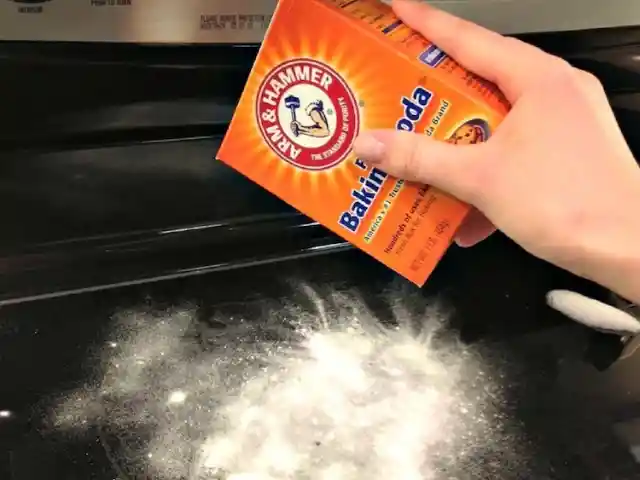

The aftermath of leaving food residues on the stovetop or experiencing a pot boiling over can lead to stubborn, seemingly unremovable messes. The good news is that we might not have to dedicate extensive hours to scrubbing those stove burners to restore their pristine appearance.
A simple solution comes in the form of a thick paste created by mixing dish soap and baking soda, which remarkably dismantles dirt and grime. All it takes is applying this concoction over any burnt-on food and allowing it to work its magic for about 20 minutes. No elbow grease required – just effortlessly wipe it away!
Potato And Coarse Salt For Dirty Pans
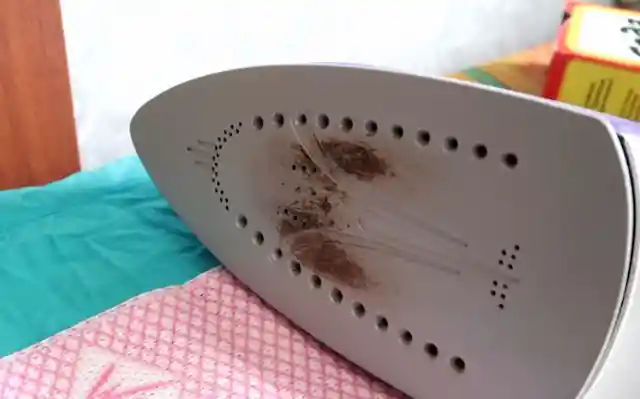
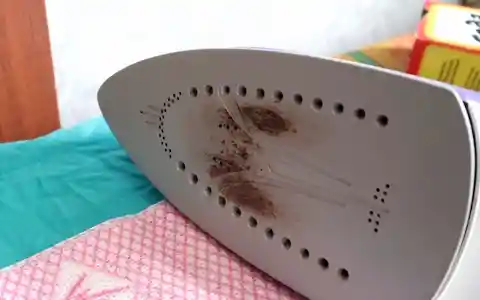
A clean iron could result in cleaner laundry. But one common frustration faced by many is the accumulation of stubborn burnt-on stains on the metal plate. While the temptation might arise to vigorously scrub it with a metal brush, there’s actually a straightforward solution to this: vinegar or baking soda.
By creating a mixture and gently applying it with a paper towel or cloth, you can efficiently clean the metal plate of your iron, effectively removing any residue. However, it’s important to exercise caution during the cleaning process, being mindful to avoid the steam holes to ensure your iron’s longevity.
DIY Cleaner For A Dirty Washing Machine
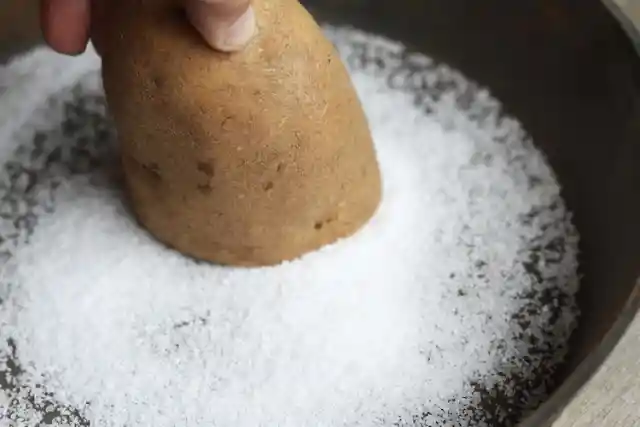
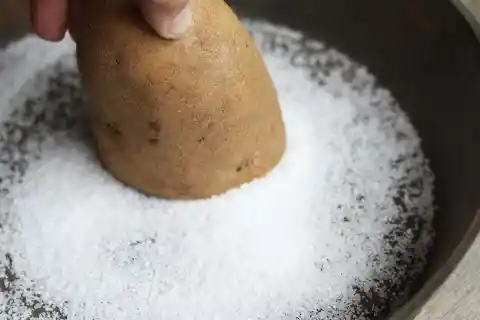
This is another way when it comes to restoring our cookware to their original shine. If you possess a standard pan and are concerned about the stubborn, burnt-on residue but wish to avoid harsh chemicals, it might be time to raid your kitchen cupboard for potential solutions.
Two surprisingly effective options include a humble potato and coarse salt. But be careful not to use this method on pans with a non-stick coating because it could damage the surface. If your pan is suitable, cut a potato in half, dip it in the coarse salt, and use it to gently remove any unwanted residues from the pan’s surface.
Citrusy Microwave Cleaning
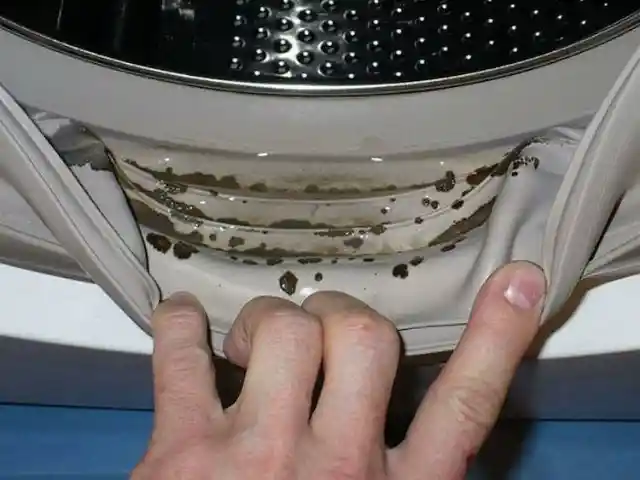
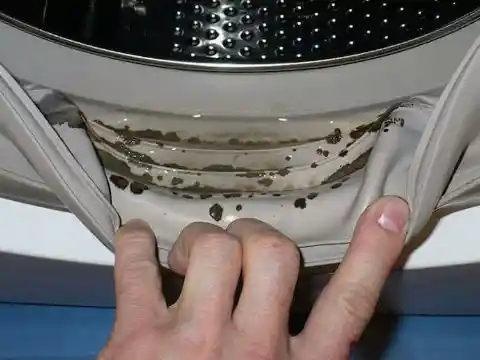
Our washing machines are invaluable for maintaining our clothes’ cleanliness, but their effectiveness diminishes when they accumulate dirt and grease over time. The buildup of limescale in washing machines can lower their cleanliness and cause bad smells if not cleaned.
Fortunately, keeping your washing machine clean is easy. Just get some citric acid, vinegar, or bleach. Put about a cup of your chosen cleaner into the empty washing machine and run it on the hottest cycle. This will clean the drum without any scrubbing and make sure your machine is disinfected and ready for your next laundry load.
Hydrogen Peroxide As Step Two For A Spotless Sink
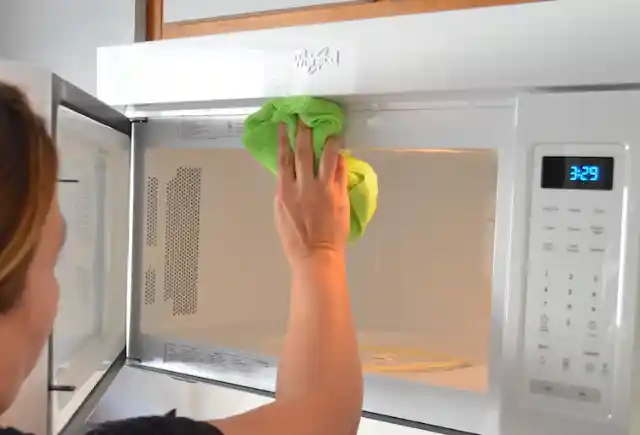
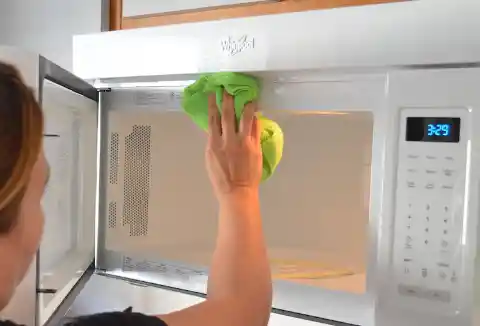
Microwaves are a common appliance that many people use every day. However, cleaning up a mess inside the microwave can be difficult for some people. It’s best to clean spills right away, but not everyone has time to do so after each use.
You can easily solve this problem with lemon juice and a microwave-safe bowl. Mix the lemon juice and water in the bowl, and heat it in the microwave until it boils, which could take a few minutes. This method will not only give the microwave a fresh smell but will also loosen any stubborn grease or food residue that has stuck to the interior, making it easier to clean.
Baking Soda On Fabric Furniture
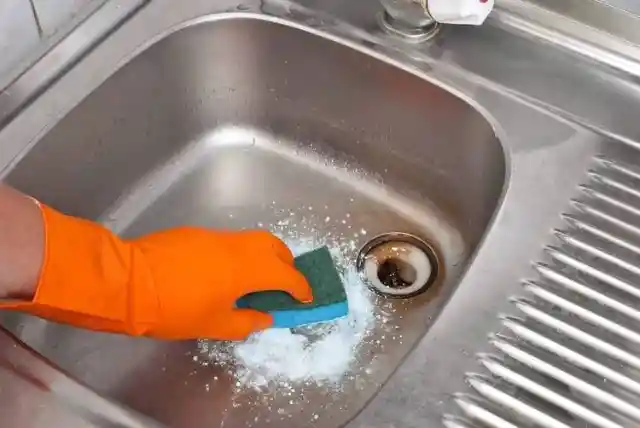
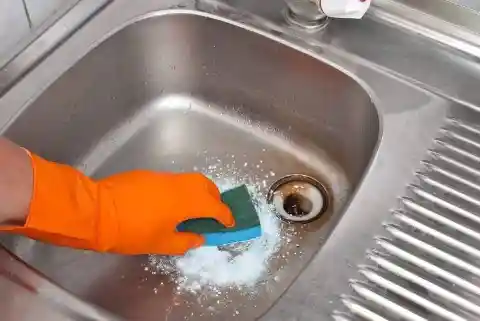
Our sinks endure constant use throughout their lifetime, from handwashing to tooth brushing, dishwashing, and a myriad of other daily tasks. It often feels like an endless cycle of cleaning and utilizing the sink. Surprisingly, there’s a simple method to both clean your sink and reduce the rate at which dirt accumulates using common household items.
Unsurprisingly, baking soda takes the spotlight in this cleaning technique. To begin, generously sprinkle baking soda across the sink’s surface. Afterward, take a sponge soaked in hydrogen peroxide and gently scrub the porcelain. You’ll be amazed as those stubborn marks vanish right before your eyes.
Pesky Pan Marks Removal With Baking Soda
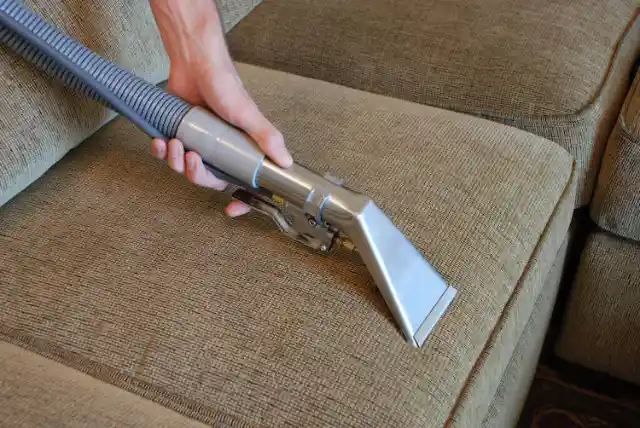
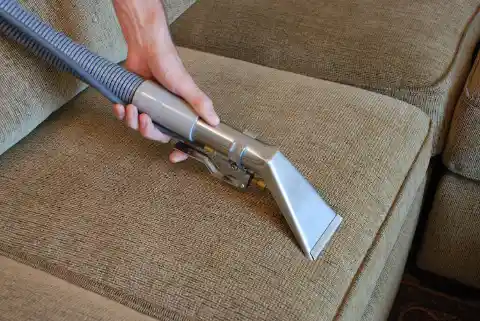
Baking soda is a ubiquitous item found in most of our kitchen cabinets and it’s great for disinfecting various soft furnishings like couches, mattresses, and more. This makes it a valuable addition to our cleaning arsenal without the need for additional cleaning products.
To start, put baking soda on the fabric and let it sit for at least 30 minutes. After that, use a stiff brush to rub the powder into the material and then vacuum it up. This method removes tough dirt and stains and makes everything clean and fresh.
Stubborn Grease Remover
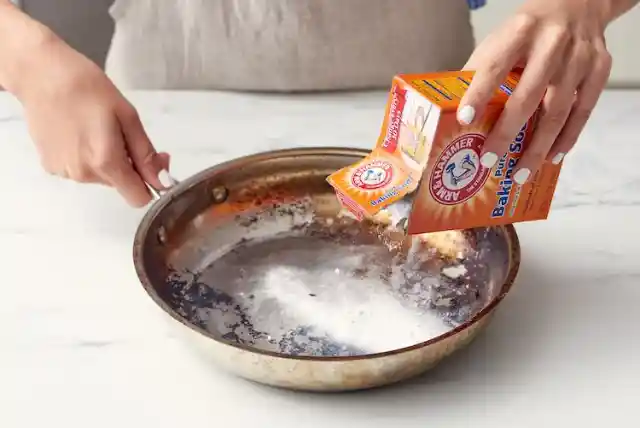
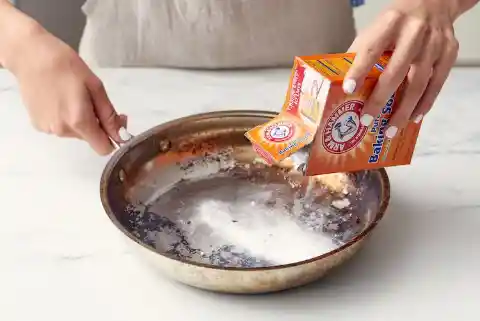
There are already two ways to clean your cookware, but here is another one. The solution is surprisingly simple as well: just arm yourself with baking soda and a trusty scrubbing brush. Begin by generously sprinkling baking soda onto the pan’s surface, then add a small amount of water to create a paste.
With your scrubbing brush in hand, diligently work the mixture into the pan, focusing on those pesky marks and stains that need erasing. While it may demand a bit of patience, you’ll be amazed at how these blemishes vanish before your eyes once you rinse the pan with clean, warm water.
Spreading Homemade Mixture All Over The Oven
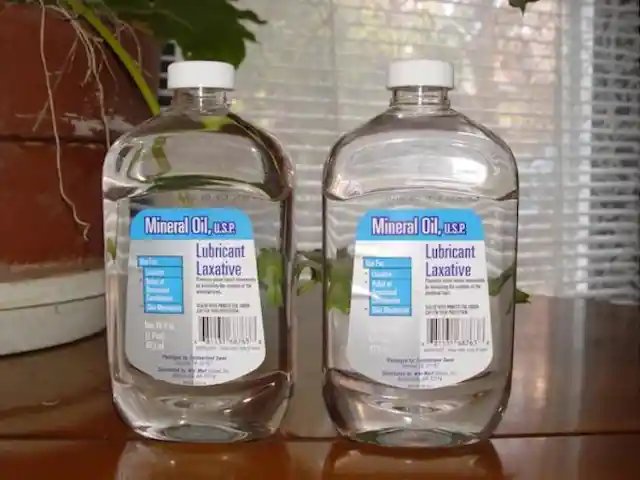
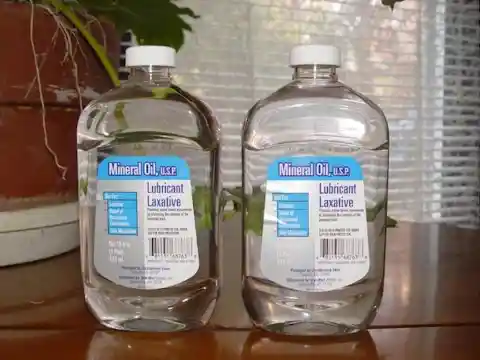
Whether you love cooking or just want a fast meal, the common struggle of dealing with greasy ovens and countertops is a shared experience. Even minor cooking splatters can transform pristine counters into an unsightly mess.
If you want to clean the stubborn grease off your countertops, use some mineral oil and a paper towel. Apply a few drops of mineral oil to a cloth or paper towel and wipe away the grease effortlessly. This will also prevent the grease from accumulating as quickly in the future.
The oven is often overlooked when it comes to cleaning, even though it has a pivotal role in our culinary endeavors. It’s important to keep our ovens clean because they’re important for preparing our meals. If you accidentally forgot to clean your oven and now have stubborn baked-on residue, don’t worry.
To clean your oven, mix a cup of baking soda and a little dish soap with some water until it looks like pancake batter. Spread it all over the inside of your oven and leave it for 15 to 20 minutes. Then wipe it off to reveal a clean oven, ready for cooking.
Goodbye, Stinky Garbage Disposer
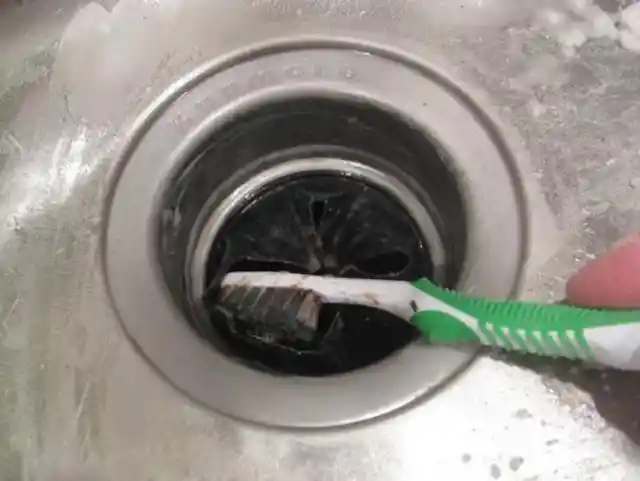
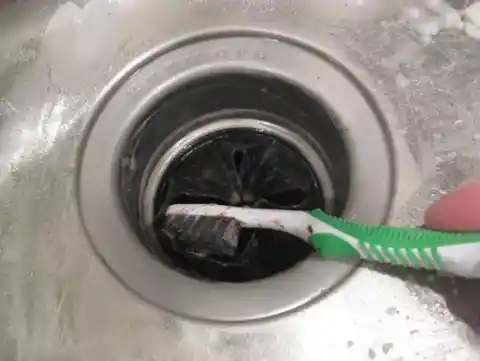
It might be time to start cleaning your garbage disposer regularly if you ever found yourself in your kitchen, perplexed by an unpleasant odor. These scenarios are common, and the good news is that tackling this task is more manageable than it may seem. The accumulation of grease and grime around the top of the disposal unit is a common culprit behind these lingering odors.
To fix this problem, first get a toothbrush and some dish soap. Make sure the garbage disposal is turned off, then clean around the top of the splash guard with the soapy toothbrush. After you’re done cleaning, run hot water through the disposal to wash away any leftover dirt. Doing this regularly will stop too much dirt from building up, and keep your kitchen smelling fresh.
Removing Rust From Metal Fixtures
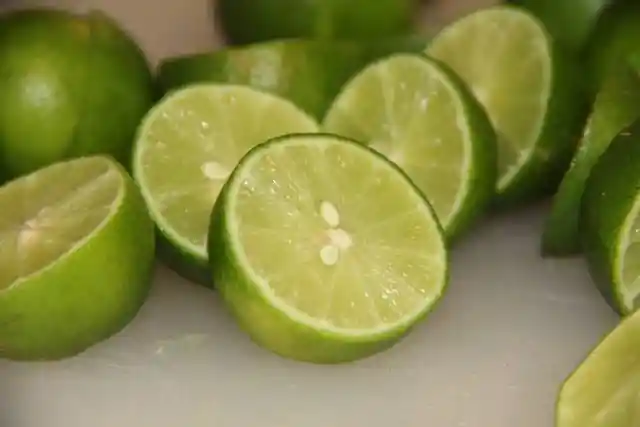
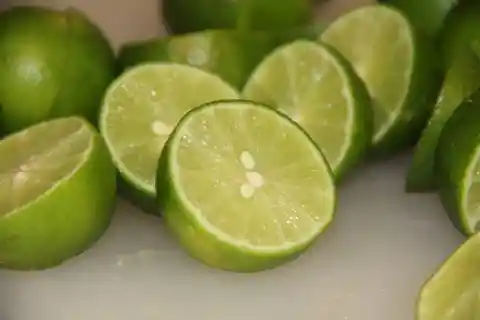
Creating a fresher and cleaner atmosphere in our homes can often be achieved with minimal effort. One effective way to achieve this is by paying close attention to the condition of metal fixtures and additions.
If you’ve noticed any signs of rust or tarnish on these elements – no worries. A simple solution involves using a lemon or lime to restore the shine. Cut the fruit in half and dip the exposed side into some table salt. Gently rub this salted fruit over the metal surface, and then rinse with water to remove the rust, all without causing excessive abrasion.
Brushing Away Spots On Glass Shower Doors
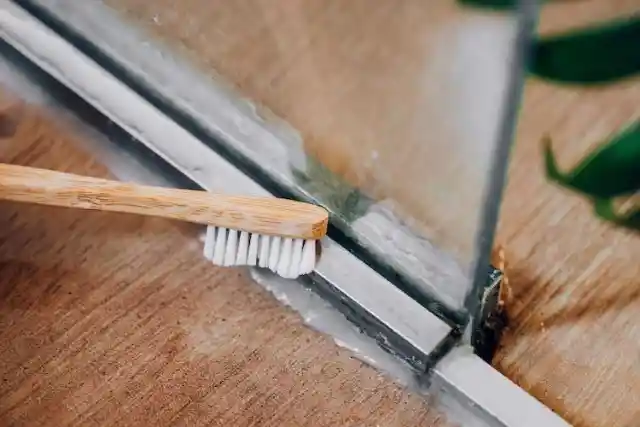
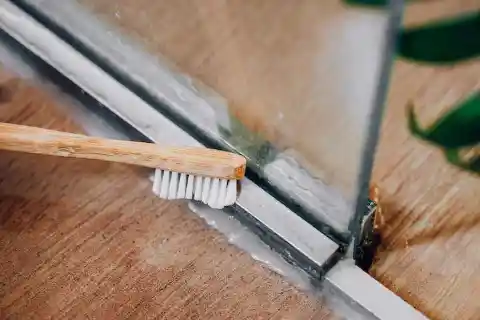
Keeping glass shower doors looking clean and shiny can be difficult, even though they look fancy and elegant. Many of us have resorted to glass cleaners and, in some cases, even kept a squeegee close at hand to combat the constant battle against streaks and smudges. Unfortunately, achieving that flawless, just-installed look often feels like an unattainable goal.
Fortunately, we have a simple solution to this problem. All you need are two tools: a toothbrush and a stiff-bristled brush. We can use these brushes to scrub the cleaner into the glass surface and get rid of those stubborn spots. The toothbrush is good for cleaning hard-to-reach areas, while the larger brush is good for cleaning the rest of the shower door to make it clear and shiny again.
DIY Mixture For Greasy Countertops
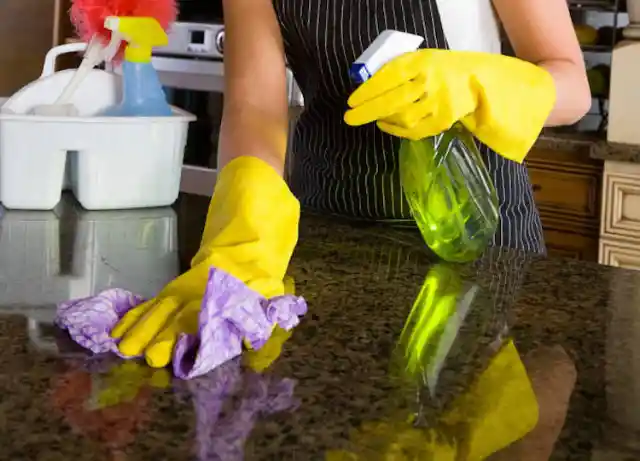
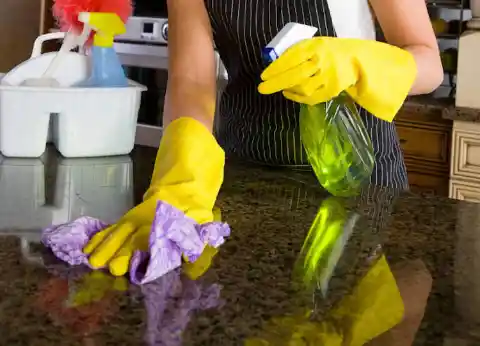
While granite countertops are a popular choice for many households, managing their upkeep can be quite challenging when the demands of family life take their toll, leaving them looking lackluster and dull. You can solve that problem by creating a little cleaning mixture.
The contents? You only need a quarter cup of surgical spirit, two cups of water, and six drops of dish soap. Mix these ingredients in a bowl or spray bottle and apply the mixture generously to your countertops. After that, wipe the surface with a paper towel to remove streaks and restore the natural shine of your countertops.
Scrubbing Baby Oil On Chrome Faucets
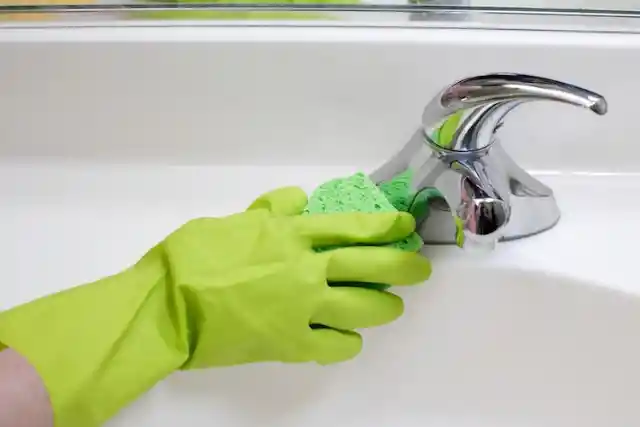
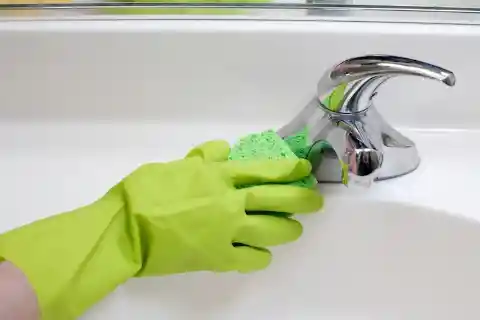
Many of us keep common household items on hand, and baby oil often finds its place in our homes. It’s not just for babies, as many people appreciate adding a touch of moisture to their skin with it.
It can actually restore the shine to your fixtures. Just pour a small amount onto a cotton pad and gently rub it over your chrome faucets. Take a few minutes to ensure you thoroughly remove any accumulated grease and grime, and soon enough, your fixtures will regain their brand-new shine.
Bleach Against Bathroom Molds
When it comes to battling stubborn bathroom mold, that trusty bottle of bleach tucked away in most households might just be the solution you’re seeking. Rather than leaving things to chance, equip yourself with a pair of rubber gloves and prepare some cotton balls soaked in a bowl of bleach.
To get rid of mold, put bleach-soaked cotton balls on the edges of the bathtub and other affected areas. Let them sit for a few minutes. The bleach will destroy the mold. Then wipe the areas with a clean cloth. Your bathtub will be left with not only odor-free but also gleaming with a newfound cleanliness!
Using A Toothbrush For Cabinet Knobs
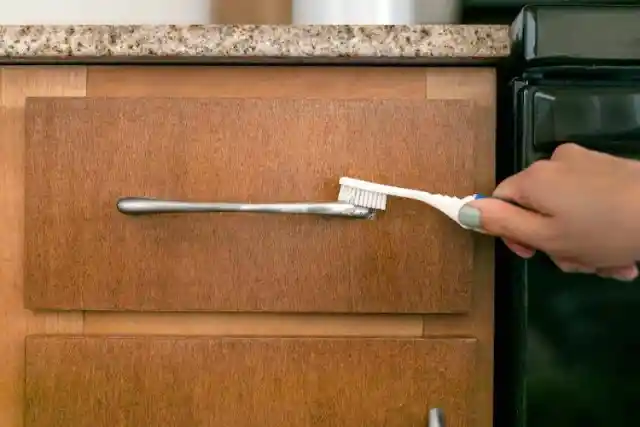
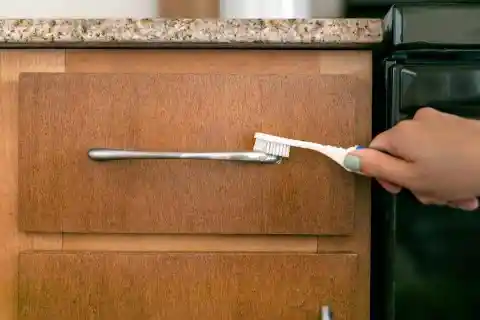
Keeping our homes clean can be overwhelming. But not everything needs a deep clean every time we organize. It’s important to remember to periodically clean our cabinet knobs to prevent them from getting too dirty and grimy.
To keep your cabinet knobs clean, you only need some simple supplies: soap and an old toothbrush. Dip the toothbrush into the soap and scrub away any grease and grime that may have built up over time. After that, use a soft cloth or an old t-shirt to gently remove any leftover soap, leaving you with shiny and refreshed handles.
Cleaning Coffee Grinders With Rice
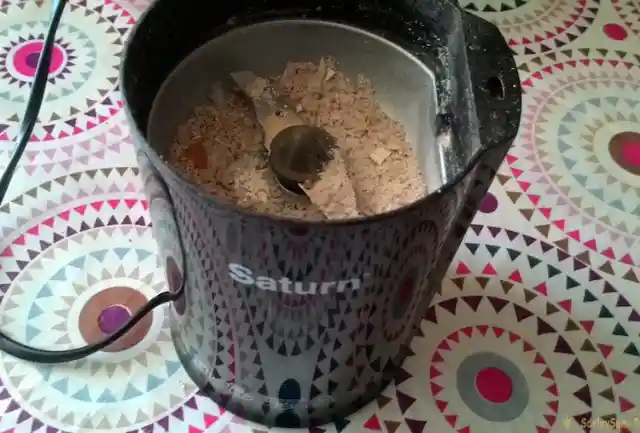
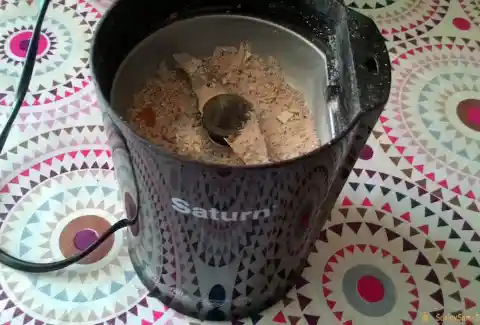
While we tend to be diligent about washing our coffee pots and cups, we often overlook the essential maintenance of the grinder. Nevertheless, it’s crucial to ensure the grinder stays in optimal condition for continued functionality and hygiene.
Ordinary dish soap may not be the best choice for this task, but there’s a simple substitute: rice. Fill your coffee grinder halfway with rice and grind it for about a minute until the rice is finely ground. This will remove any coffee residues, dirt, or odors, leaving your grinder clean and ready for your next use.
Oxygen Bleach Against Tub Stains
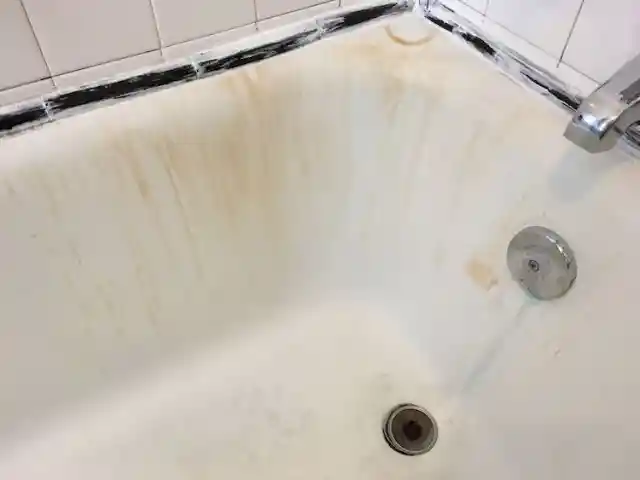
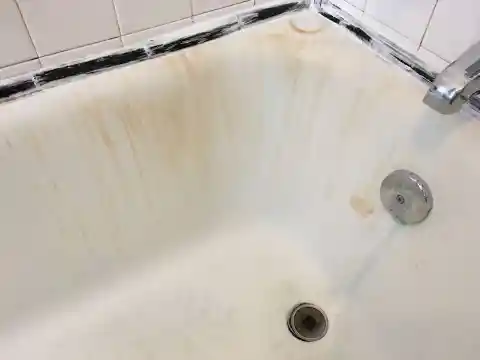
Many of us diligently tackle bathtub cleaning on a weekly basis, aiming to maintain its pristine appearance. But did you know that there’s a game-changing overnight soaking method that can restore that coveted sparkling finish to our tubs?
This transformative technique requires just a full bathtub and some oxygen bleach. Pour a big scoop of oxygen bleach into the bathtub and let it sit overnight. Make sure the room is well-ventilated and keep pets and children away. In the morning, drain the water and rinse the bathtub with fresh water. Your bathtub will look like new again!
Lampshade Lint Roller
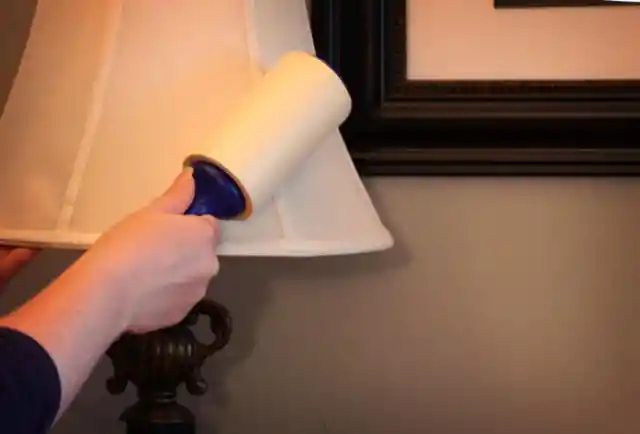
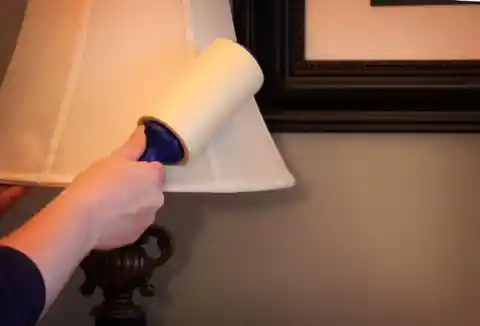
While lint or adhesive rollers are renowned for their effectiveness in removing hair and dust particles from clothing, their use extends beyond our wardrobes. It’s high time we consider employing these versatile tools to elevate the cleanliness of our entire living spaces.
Cleaning lampshades in our homes is something we often forget. But if we don’t do it, dust will build up and make the room less clean. With the simple use of a lint roller, you can effortlessly eliminate dust from lampshades, sparing you with concerns about potential damage to these delicate fixtures.
Coffee Filters For Smudged Screens
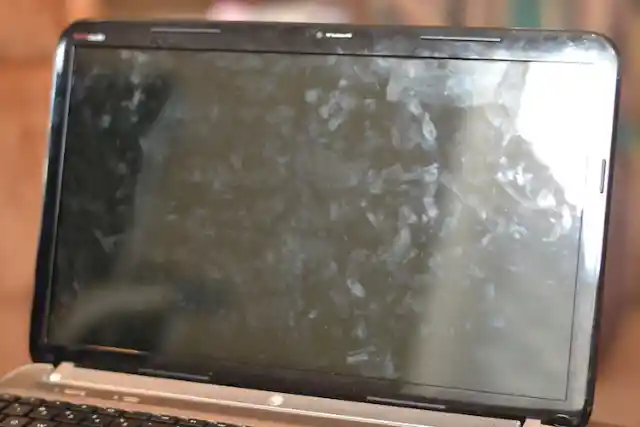
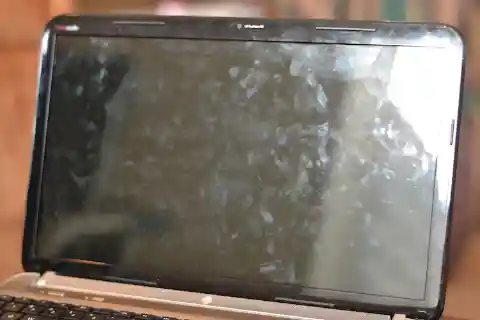
Having a streaky screen can be a real pain, especially when it gets in the way of our work or leisure time. Whether it’s from working at home, kids using our screens, or simply the daily dust and fingerprints that accumulate, it’s frustrating when you can’t see through your screen clearly.
The frustration can escalate when our attempts to clean the streaks inadvertently make things worse by smudging them all over. There are many products available in the market that claim to remove every smudge and streak, but you don’t need to spend a penny. A simple solution is to grab a coffee filter, apply a bit of cleaner to it, and effortlessly wipe away those annoying marks.
A DIY Cleaner For AC Vents
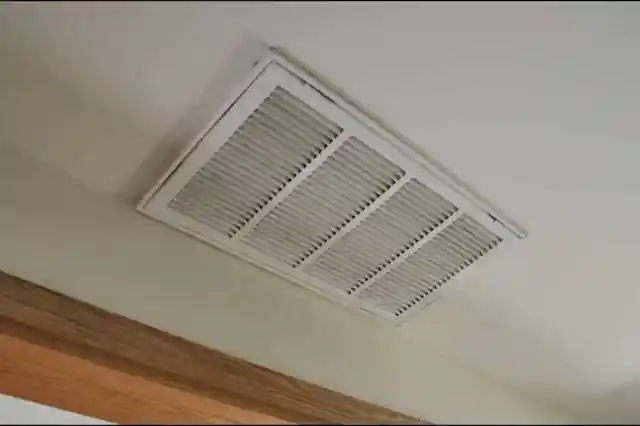
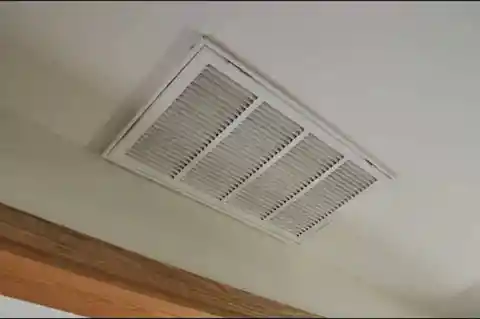
It’s surprising how often people overlook the task of cleaning their air conditioning vents, but addressing this issue doesn’t have to be a daunting chore. To start, create a cleaning solution and saturate a cloth with it. Wring out the cloth until it’s just slightly damp.
Next, wrap the damp cloth around a long, slender object like a solid stick or a blunt knife. This makeshift tool can be used to gently insert into the vents and dislodge any accumulated dust. The damp cloth will efficiently trap the loosened dust, leaving your air vents cleaner and potentially contributing to healthier indoor air quality.
DIY Dusty Blinds Cleaner
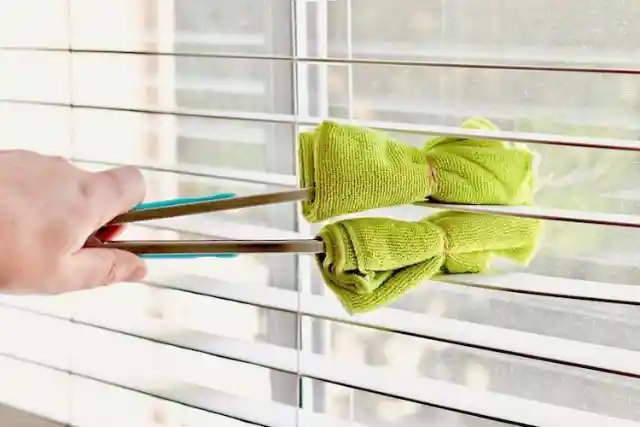
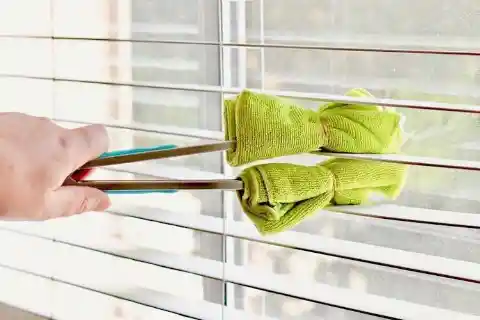
Enhancing the overall cleanliness of a room often boils down to the finer details. If you closely inspect your window blinds, you may notice that they are not as pristine as the rest of the room. While there are specialized tools available for effortless blind cleaning, not everyone has the space or budget to accommodate these additional gadgets.
But with just a pair of tongs and two cloths, you can achieve the same results without the need for extra equipment. To clean your blinds, soak some cloths in cleaning solution and wring them out until they’re just damp. Attach a cloth to each side of a pair of tongs using rubber bands. Then, simply run the tongs along each slat of the blinds to clean them.
Streak-Free Windows With Onions
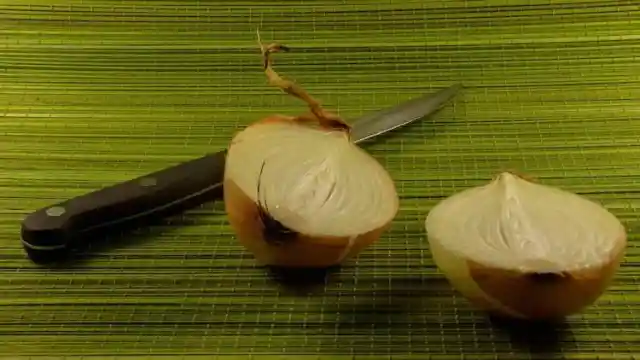
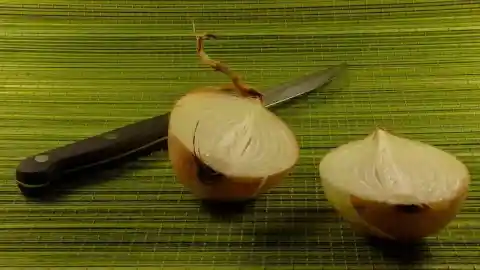
Whether you find yourself in need of a window cleaner and lack suitable commercial options, or simply prefer an eco-friendly approach, this might be the perfect opportunity to raid your pantry for a spare onion.
Start by cutting an onion in half. Use the cut end to gently rub on your windows. This method is not only effective in removing dirt and grime, but also leaves your windows streak-free. Remember to dispose of the onion properly once you’re done cleaning to avoid any mix-ups in the kitchen later on.
Cleaning Grimes Off Vases
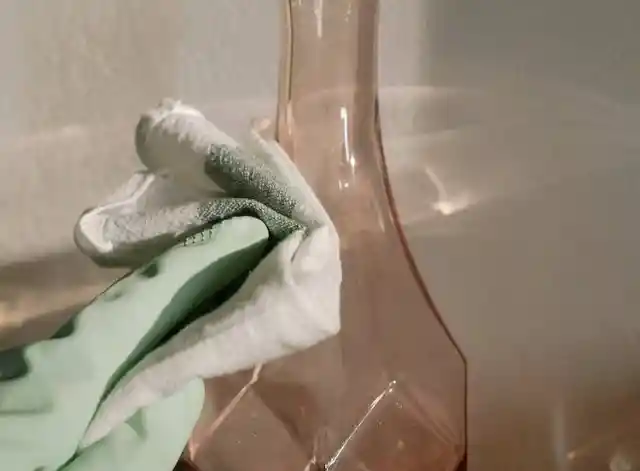
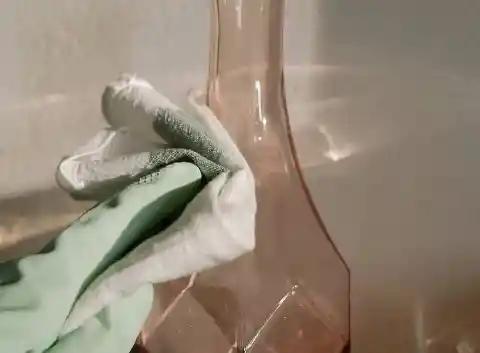
Fresh flowers can bring a unique charm to any home, but they can also pose a challenge when it comes to maintaining the condition of our delicate vases. Over time, the accumulation of grime can cause unsightly discoloration in the glass, leaving many of us perplexed.
But consider this easy solution: Add some crushed eggshells, dish soap, and water to restore your vase’s shine. Gently swish in all directions to remove dirt and keep your cherished possession in great condition, while being eco-friendly.
Surgical Spirit On Microfiber Furniture

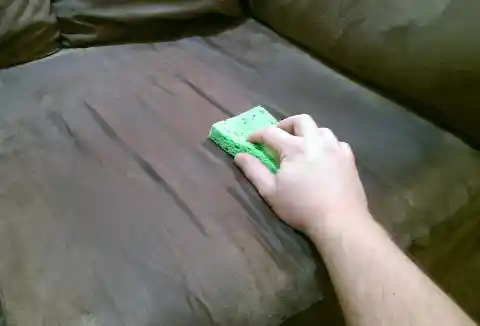
If you have microfiber furniture, there’s a good chance you’ve learned that you need to invest in a separate cleaning routine from the rest of the fabric in your house. A cloth won’t do, meaning you need surgical spirit and a stiff brush instead.
Pour some surgical spirit into a spray bottle and spray it all over the dirty microfiber furniture. Then, use a clean, white sponge – not a colored one in case there is any color transfer – to wipe over the area and remove any dirt that’s lifted. Finish things off by using a stiff brush to complete the clean before letting the area air dry.
Removing Coffee Stains On Mugs
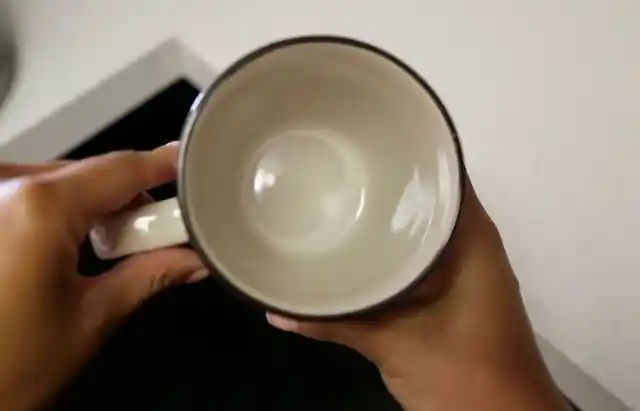
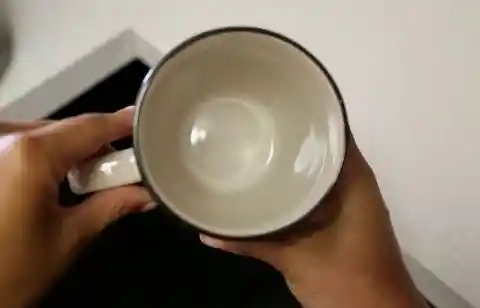
Coffee is a daily necessity for many of us, but it often leaves behind stubborn stains on our mugs that seem to defy all efforts to remove them. Even if we leave our coffee cups unattended for just a few hours, those unsightly stains can become a real headache.
The next time you enjoy a refreshing lemon, don’t toss away the peel. Mix it with a pinch of salt to create a great cup cleaner that will help eliminate tough stains and restore your cups to their original shine. This method is especially useful for those who want to keep their white mugs clean while enjoying their coffee.
Shoe Polish For Leather Furniture
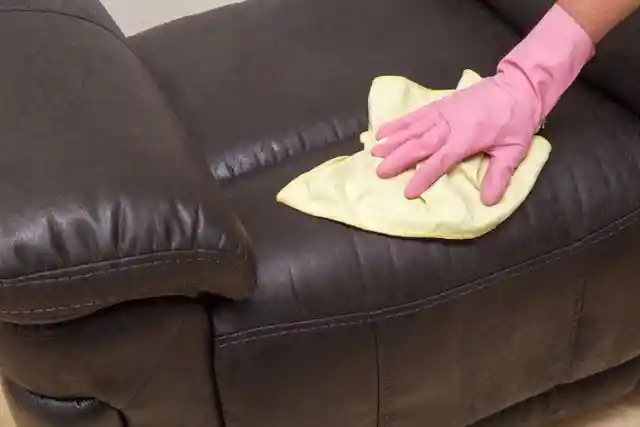
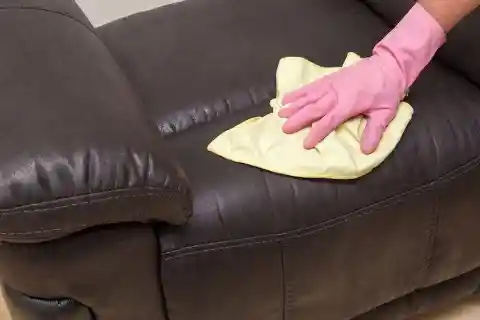
Leather furniture, although aesthetically pleasing, can gradually accumulate various marks and discolorations over the years, losing its initial luster. When you observe that your furniture requires some restoration, it may be an appropriate moment to acquire some shoe polish.
Ensure that the shoe polish closely matches the color of your furniture to avoid causing any inadvertent damage. Then, simply apply the polish in a gentle, circular motion, working it into the leather until the marks and discolorations vanish. This method not only restores your leather’s appearance but also acts as a preventive measure against future markings.
Toothpaste As A Cleaning Solution
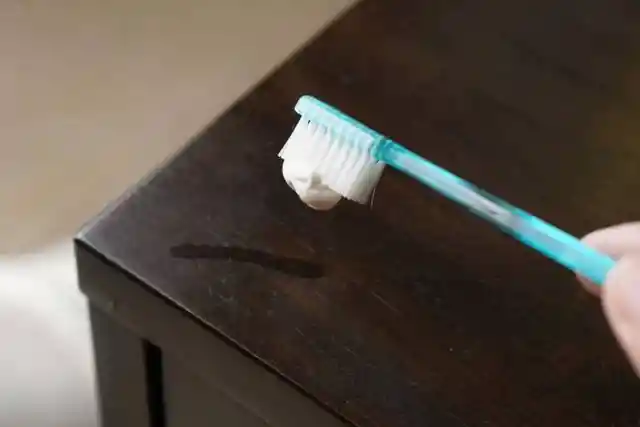
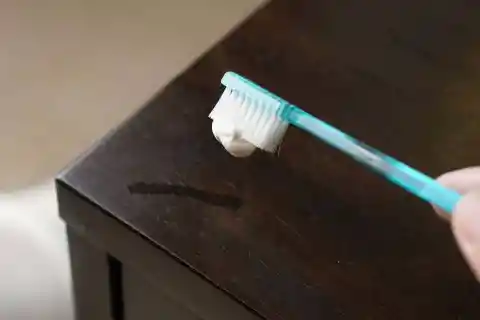
If you have young children in your life, you’ve probably noticed an unexplainable greasy film that seems to cling to everything. You don’t have to break the bank on expensive cleaning solutions to banish that stubborn grime.
Surprisingly, your bathroom might hold the ultimate cleaning solution – toothpaste. It’s an excellent method for eliminating accumulated dirt on toys and various plastic surfaces. Simply apply a small amount to a cloth and use it to clean and refresh these items effortlessly.
Preventing Dust Build-Up With Wax On Car Vents
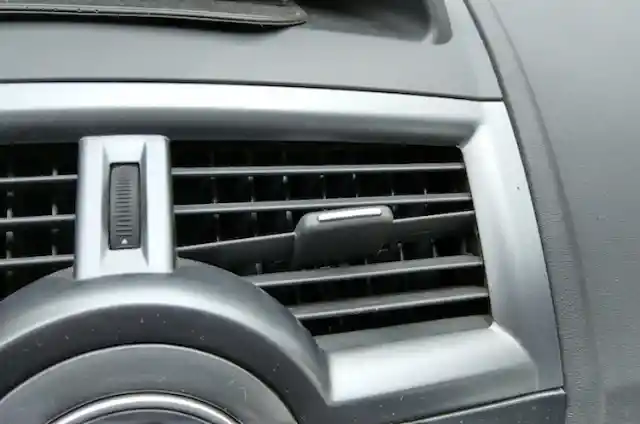
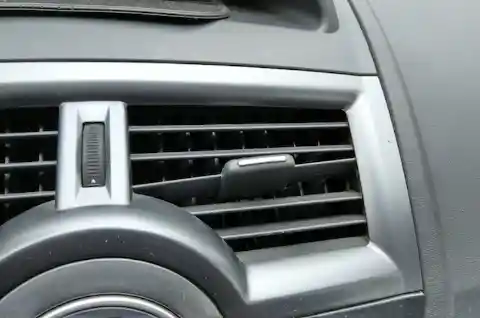
Have you ever experienced those unexpected moments when you decide to activate the heating or air conditioning in your car, only to be greeted by a sudden cloud of dust that’s accumulated during periods of non-use? You’re certainly not alone in this struggle.
Although it’s essential to start with dust-free vents, it has been discovered that applying a thin layer of wax to all your vents can potentially prevent dust buildup, ultimately making them easier to maintain in a pristine condition over time.
Use A Mop For Walls And Ceilings


For some reason, cobwebs are popping up in our house and we sometimes we have no idea where they came from. Bot all of us are tall enough to reach them down, or we don’t have a telescopic duster to get them out of the way.
That’s where our mop can come in. If you already have one to keep your floors clean, then why not do the same for your walls? All you need to do is dampen your mop ever so slightly to catch the cobwebs.
Removing Accumulated Grime From Filter Vents
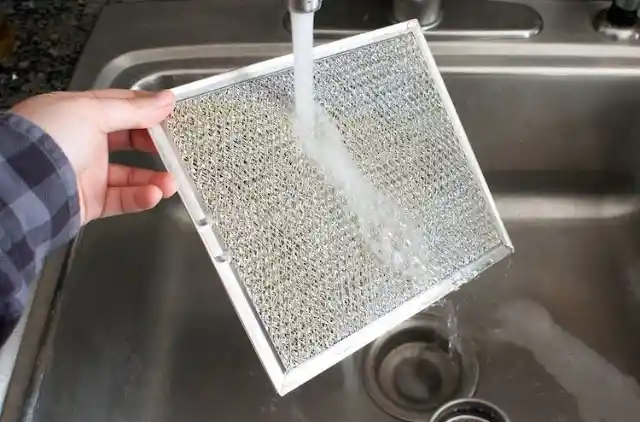
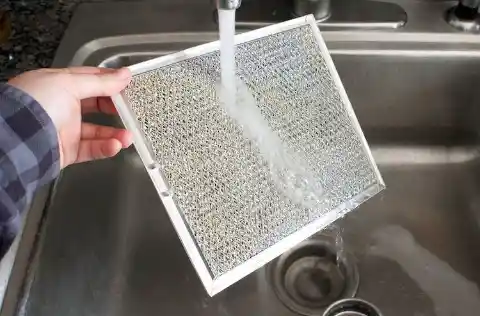
Although they don’t demand daily maintenance, it’s advisable to schedule a cleaning session once or twice a year. It can be astonishing to witness how rapidly these vents accumulate layers of grease and dirt. To start cleaning, find a big bowl for your filters.
Fill the bowl with hot water and introduce a sprinkle of borax. Allow this mixture to sit for at least 20 minutes, effectively loosening and removing the accumulated grime. Afterward, rinse the filters thoroughly under hot water. Give your oven vent filters the chance to air dry before reinstalling them, thereby setting the stage for your next culinary adventure in a pristine oven.